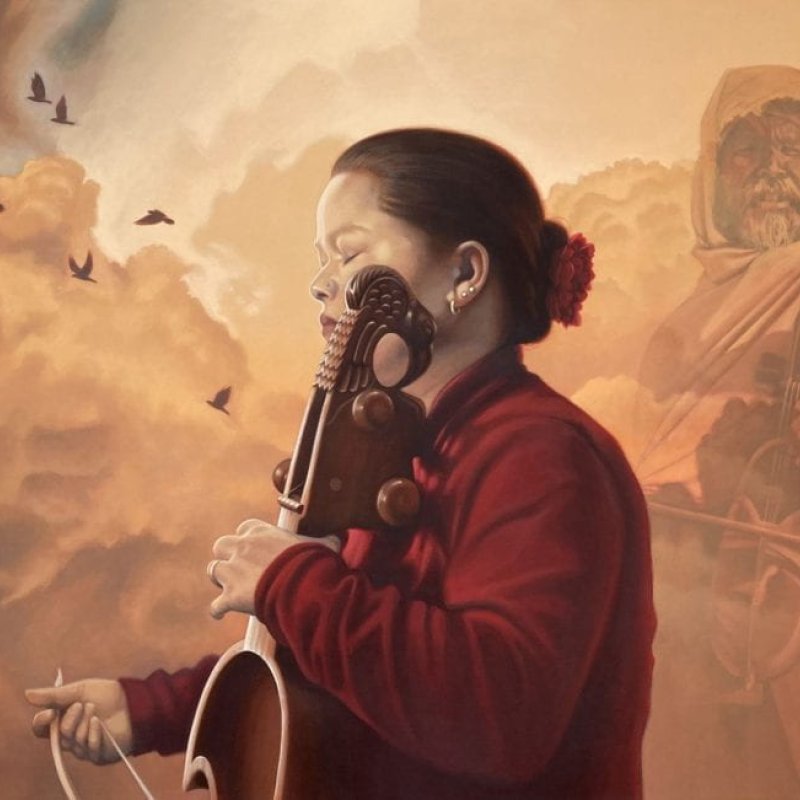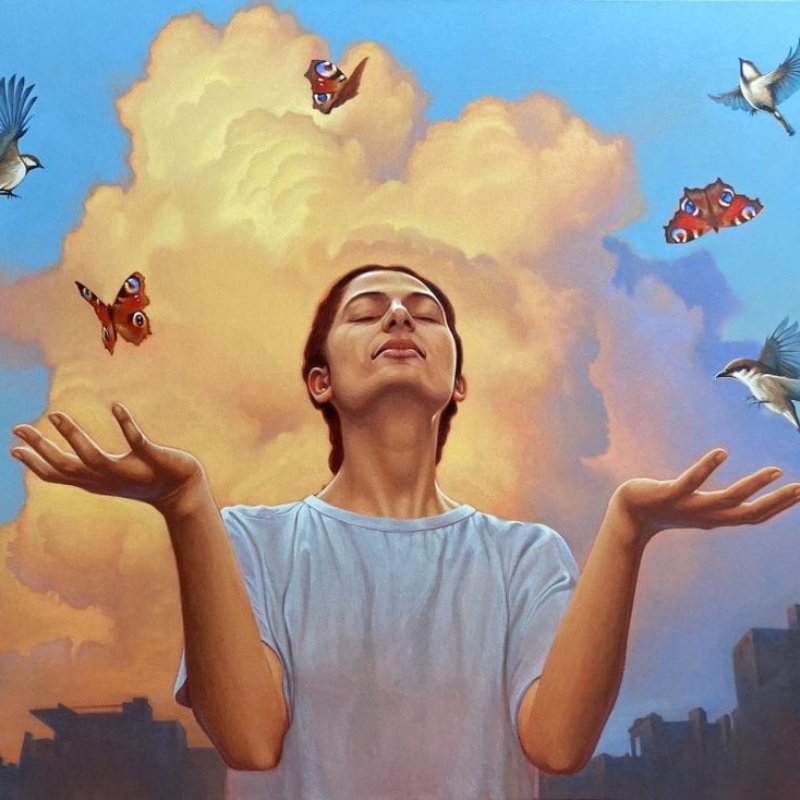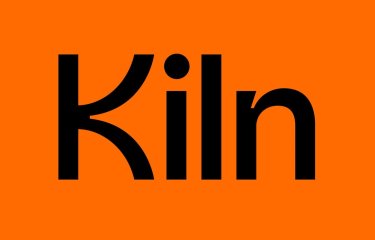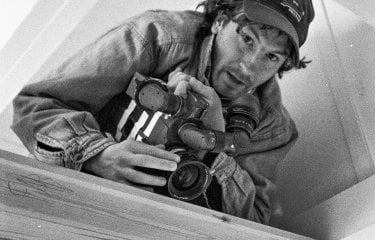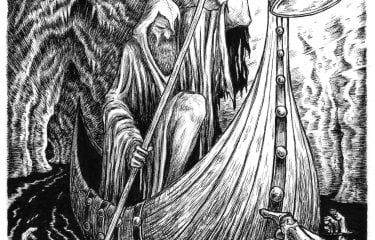Graduate Spotlight: artist and youth arts developer Martin Travers
28 March 2025
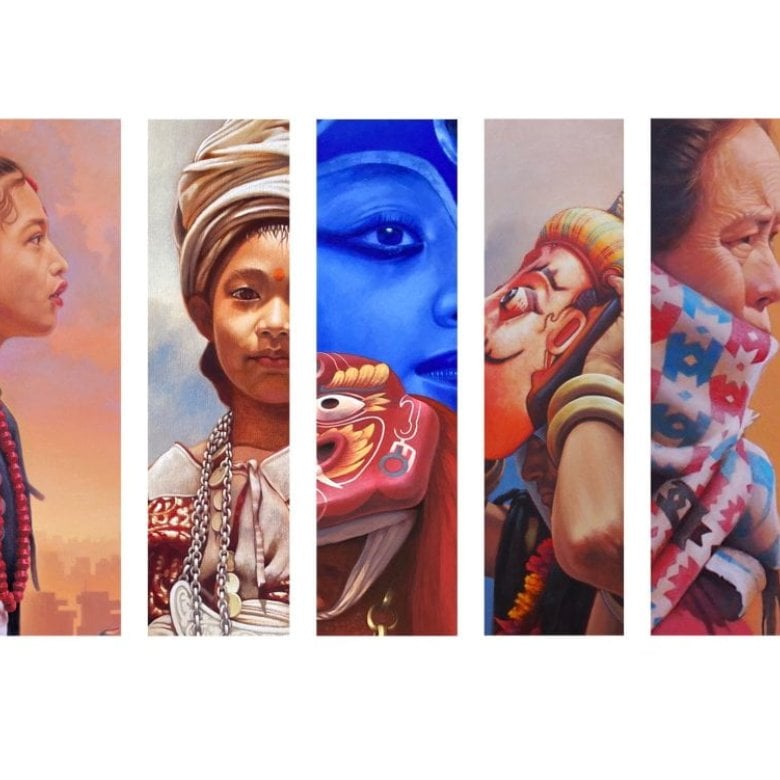
From ‘Transition in Tradition’ series by Martin Travers
International artist Martin Travers works across a wide range of disciplines including murals, fine art, scenic and specialist decorative painting. Travelling the world painting murals, Martin also works extensively on community arts projects. Through leading workshops, Martin’s goal is to build positive, creative alternatives for at-risk young people and others in remote communities.
Ireland-based Martin recently completed his Fine Art MA (Online) Final Major Project entitled ‘Transition in Tradition’, a body of large-scale canvas paintings which were exhibited in India and Nepal.
We chatted to Martin about his work, his time on the master’s and how the course has helped him to realise many of his ambitions, both on and off canvas.
What made you decide to take on Falmouth's online Fine Art master's?
Falmouth's master's stood out as one of the few universities offering a Fine Art master’s degree that is both part-time and fully online, making it the perfect fit for my nomadic lifestyle and diverse ambitions.
I spend a significant amount of time in Nepal, where I run an art class for underprivileged students in the capital. The course not only enabled me to continue teaching while also enriching my practice with insights from my studies. One of my primary motivations was to further develop my interest in teaching and education; I have always been passionate about using art as a tool to engage and inspire, and Falmouth’s online master’s provided me with the opportunity to refine my skills with a more academic perspective.
Additionally, I wanted to advance my artistic career by focusing on canvas paintings and gallery exhibitions rather than street art and murals, which have been the primary focus of my work for a long time. While I have enjoyed the dynamic and accessible nature of street art, transitioning to more traditional forms of fine art is allowing me to grow as an artist and reach new audiences within the gallery space.
My background in hip hop and graffiti culture has deeply shaped my artistic identity, and I believe these art forms deserve greater recognition within the academic art world. By pursuing this degree, I hope to use my experience to bridge the gap between these underrepresented art forms and mainstream education, enabling them to reach and resonate with individuals from more diverse backgrounds.
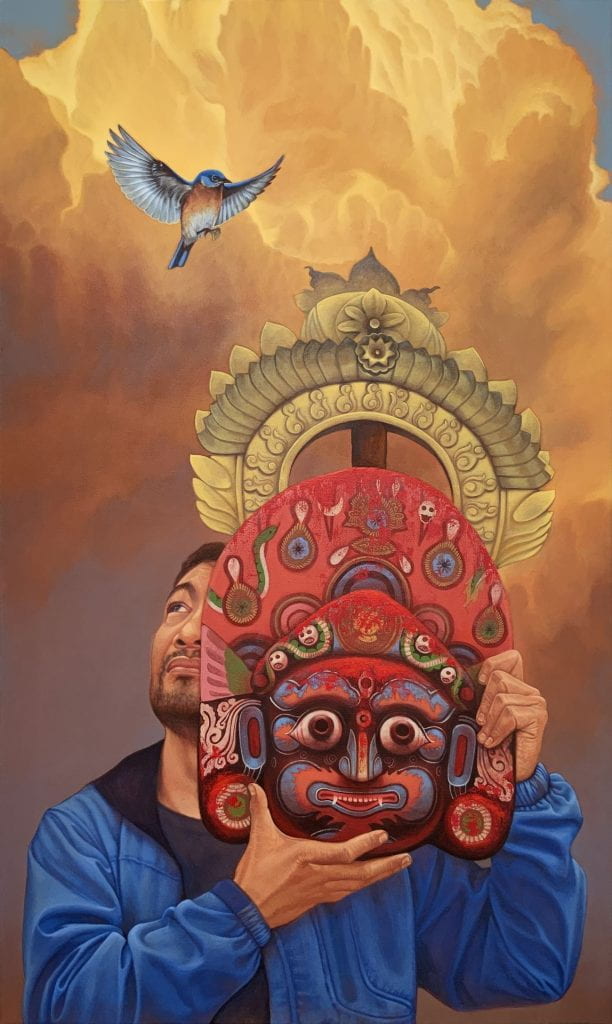
How did your practice evolve while on the course?
My practice evolved significantly, particularly in how I think about my work and its place in the art world. I refined my focus on the stories of my protagonists—a term I prefer over ‘subjects’—and explored ways to represent them with as much agency as possible. By working closely with them to gain a deeper understanding of their stories, I considered how to portray their narratives in a way that respects their perspective and fosters deeper audience engagement. As a result, my work has become more site-specific, research-led, and interactive.
The course also played a key role in my transition from street art to canvas painting, helping me refine my methodology and bring the energy of my previous work into a studio-based practice. Ultimately, it gave me a clearer understanding of what I do and why I do it, deepening both my conceptual approach and connection with my audience.
How did you find the online nature of the course?
I found the online format to be very effective; it was well-structured, allowing me to balance coursework with my work and travel commitments quite easily. Despite the remote nature, the weekly webinars and interactive elements helped foster a sense of community.
The site-specific module was a highlight for me, offering insights that directly influenced my practice. Although I am not particularly technology minded, I found the platform user-friendly, and any technical issues were quickly and efficiently addressed by support staff. This made the learning experience smooth and accessible.
Overall, it’s been a great experience – one that’s also given me confidence in online learning and teaching. There’s room for more tutor-student dialogue, but the format is an effective way to study Fine Art at a high academic level.
What projects are you working on at the moment?
I'm continuing to develop the ‘Transition in Tradition’ series I made for my Final Major Project, researching how ancient artistic practices in Nepal are evolving to stay relevant for younger generations. This involves networking and travelling to remote areas of the Himalayas and the plains to meet with communities and practitioners. Building on this research, I am developing a PhD proposal focused on the evolution of ancient, indigenous art in contemporary Nepal and exploring institutions in the UK and Europe.
In February, I held an exhibition of the work at the UNESCO World Heritage Museum in Patan, with plans to show it in the UK and Ireland later this year.
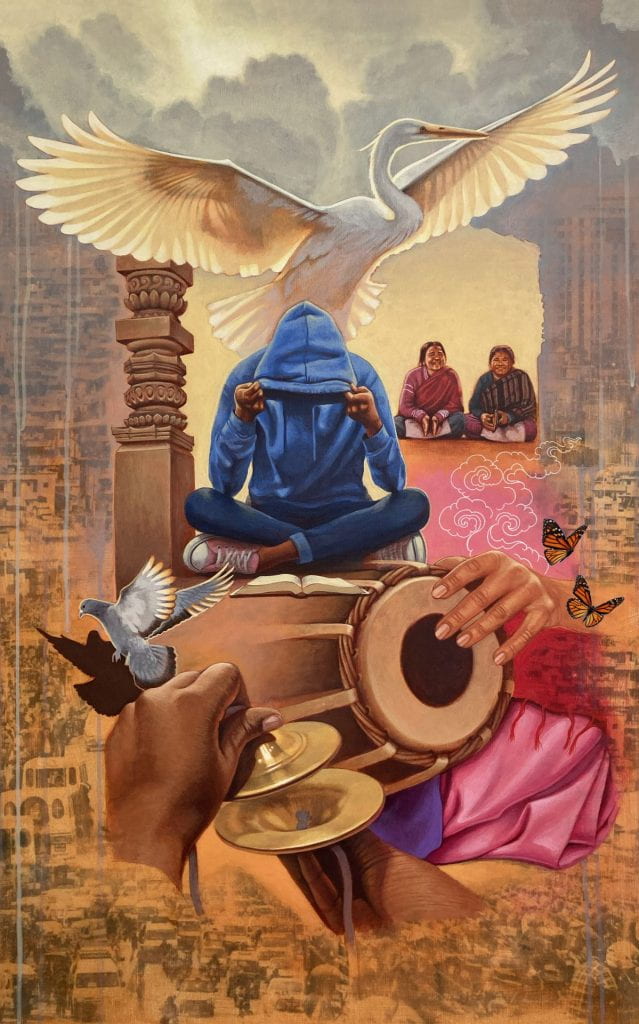
In Kathmandu, I continue to run an after-school art class for students from low-income schools where art isn’t part of the curriculum. The long-term goal is to advocate for quality art education in all government and community schools by working closely with teachers, monitoring student progress, and focusing on parent outreach.
Finally, I’m developing an idea for a mobile ‘art bus’ that would travel to remote Himalayan villages, serving as a traveling exhibition, art workshop, and teacher training initiative to make art more accessible.
